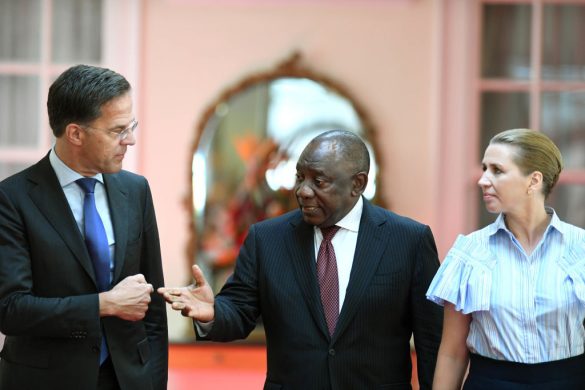FN fremlagde mandag en plan, der skal afhjælpe en række sammenhængende humanitære kriser i Sahal-området, der ligger lige syd for Sahara. Her er en introduktion til de mange problemer, som området befinder sig i.
NEW YORK, 2 February, 2014 (UNOCHA): The Sahel – a region that stretches across southern fringe of the Sahara desert– is home to some of the world’s poorest and most vulnerable people.
In 2011 and 2012, a combination of fierce drought and conflict meant millions of children, women and men were in need of aid simply to survive. The international community rallied, and a large-scale catastrophe was averted.
But the factors that drove this vulnerability remain unchecked. The situation for countless communities across the region – including across Senegal, the Gambia, Mauritania, Mali, Burkina Faso, Niger, Chad, northern Nigeria and Cameroon – is still desperate.
Today, at an event in Rome, Italy, the UN and its global humanitarian partners will launch a new, three-year plan for the Sahel . Here are the five things you need to know about the crisis in the Sahel, and the efforts of aid groups to help people withstand and overcome it.
1. The number of people who don’t know where their next meal will come from has almost doubled in the past year.
At the beginning of 2013, there were 11 million people classified as ‘food insecure’. Today, there are more than 20 million. Of these, an estimated 2.5 million people need urgent humanitarian assistance just to survive.
In south-east Niger, for example, a convergence of floods, droughts and conflict in neighbouring Nigeria means that people near the town of Diffa cannot grow enough food to get by.
“We’ve had nothing to eat for ten days,” said Mohamed Dala. “Before the floods I could at times produce 50 bags of peppers as well as millet and maize.”
2. Food and nutrition are at the heart of the crisis, but there are many other factors at play.
Almost 5 million children are expected to become moderately or severely malnourished in 2014. Across the Sahel, more than 1.2 million people have had to flee violence and insecurity, with most of them crossing into neighbouring countries as refugees where they place further strain on already limited resources.
People are highly vulnerable to disease and epidemics, and because health infrastructure is so limited, many people die of illnesses that they should survive.
3. A new approach is needed to break this cycle of hunger and vulnerability.
The crisis in the Sahel is severe, but it is not new. The cycle of humanitarian crisis can no longer be met by a cycle of humanitarian response. UN Humanitarian Coordinator for the Sahel, Robert Piper, put in bluntly in an interview last September.
“‘Business as usual’ doesn’t cut it,” he said. “We’re going to have a very large caseload of people every year unless we change our approach.”
This year, for the first time ever, the UN and aid groups are announcing a three year plan to tackle these challenges in a more systematic way. Aid groups have also changed how they work together.
Different agencies with expertise in different facets of humanitarian response – be it water and sanitation, health care, or nutrition – have come together to devise common plans that tackle the range of challenges that communities face.
4. Humanitarian groups are collaborating with governments and development agencies.
The scale of need is so great that no agency can tackle it alone. At last year’s General Assembly, the global community adopted an integrated strategy for the Sahel. This strategy recognizes that humanitarian need cannot be addressed in isolation from security or development concerns.
People displaced by fighting in northern Mali need peace and stability before they need help replanting their crops or rebuilding their health clinics. Governments and development agencies are the ones responsible for addressing the deep, structural causes of poverty and inequality that make people so vulnerable to disasters.
5. Aid groups are confident they can make a huge difference.
But they need funding to do so. In 2014, 117 aid groups need just over US$2 billion to support millions of people across the nine countries.
What will this money allow aid agencies to achieve?
For $1 million, aid groups could provide basic but life-saving water and sanitation infrastructure for 40,000 people affected by natural disasters and conflict in Chad.
For $12.5 million, the humanitarian community in Burkina Faso could provide nutrition and medical care for 115,000 severely malnourished children.
For just under $10 million, more than 500,000 children could receive quality basic education in northern Mali.















